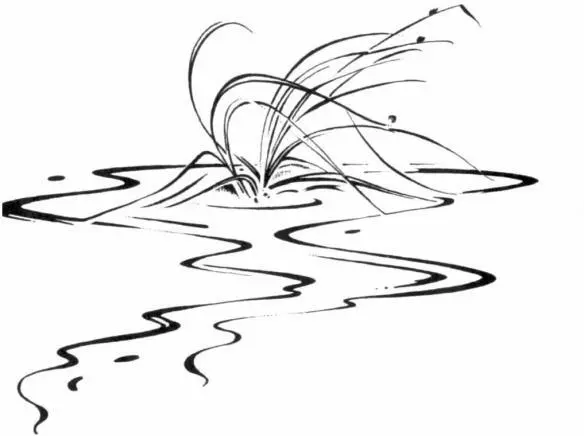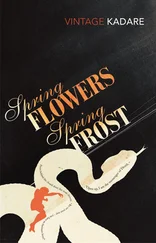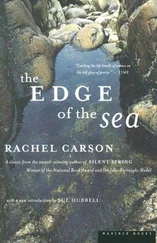This very sort of contamination has created endless problems for at least one leading manufacturer of baby foods who has been unwilling to buy any fruits or vegetables on which toxic insecticides have been used. The chemical that caused him the most trouble was benzene hexachloride (BHC), which is taken up by the roots and tubers of plants, advertising its presence by a musty taste and odor. Sweet potatoes grown on California fields where BHC had been used two years earlier contained residues and had to be rejected. In one year, in which the firm had contracted in South Carolina for its total requirements of sweet potatoes, so large a proportion of the acreage was found to be contaminated that the company was forced to buy in the open market at a considerable financial loss. Over the years a variety of fruits and vegetables, grown in various states, have had to be rejected. The most stubborn problems were concerned with peanuts. In the southern states peanuts are usually grown in rotation with cotton, on which BHC is extensively used. Peanuts grown later in this soil pick up considerable amounts of the insecticide. Actually, only a trace is enough to incorporate the telltale musty odor and taste. The chemical penetrates the nuts and cannot be removed. Processing, far from removing the mustiness, sometimes accentuates it. The only course open to a manufacturer determined to exclude BHC residues is to reject all produce treated with the chemical or grown on soils contaminated with it.
Sometimes the menace is to the crop itself—a menace that remains as long as the insecticide contamination is in the soil. Some insecticides affect sensitive plants such as beans, wheat, barley, or rye, retarding root development or depressing growth of seedlings. The experience of the hop growers in Washington and Idaho is an example. During the spring of 1955 many of these growers undertook a large-scale program to control the strawberry root weevil, whose larvae had become abundant on the roots of the hops. On the advice of agricultural experts and insecticide manufacturers, they chose heptachlor as the control agent. Within a year after the heptachlor was applied, the vines in the treated yards were wilting and dying. In the untreated fields there was no trouble; the damage stopped at the border between treated and untreated fields. The hills were replanted at great expense, but in another year the new roots, too, were found to be dead. Four years later the soil still contained heptachlor, and scientists were unable to predict how long it would remain poisonous, or to recommend any procedure for correcting the condition. The federal Department of Agriculture, which as late as March 1959 found itself in the anomalous position of declaring heptachlor to be acceptable for use on hops in the form of a soil treatment, belatedly withdrew its registration for such use. Meanwhile, the hop growers sought what redress they could in the courts.
As applications of pesticides continue and the virtually indestructible residues continue to build up in the soil, it is almost certain that we are heading for trouble. This was the consensus of a group of specialists who met at Syracuse University in 1960 to discuss the ecology of the soil. These men summed up the hazards of using “such potent and little understood tools” as chemicals and radiation: “A few false moves on the part of man may result in destruction of soil productivity and the arthropods may well take over.”

WATER, SOIL, and the earth’s green mantle of plants make up the world that supports the animal life of the earth. Although modern man seldom remembers the fact, he could not exist without the plants that harness the sun’s energy and manufacture the basic foodstuffs he depends upon for life. Our attitude toward plants is a singularly narrow one. If we see any immediate utility in a plant we foster it. If for any reason we find its presence undesirable or merely a matter of indifference, we may condemn it to destruction forthwith. Besides the various plants that are poisonous to man or his livestock, or crowd out food plants, many are marked for destruction merely because, according to our narrow view, they happen to be in the wrong place at the wrong time. Many others are destroyed merely because they happen to be associates of the unwanted plants.
The earth’s vegetation is part of a web of life in which there are intimate and essential relations between plants and the earth, between plants and other plants, between plants and animals. Sometimes we have no choice but to disturb these relationships, but we should do so thoughtfully, with full awareness that what we do may have consequences remote in time and place. But no such humility marks the booming “weed killer” business of the present day, in which soaring sales and expanding uses mark the production of plant-killing chemicals.
One of the most tragic examples of our unthinking bludgeoning of the landscape is to be seen in the sagebrush lands of the West, where a vast campaign is on to destroy the sage and to substitute grasslands. If ever an enterprise needed to be illuminated with a sense of the history and meaning of the landscape, it is this. For here the natural landscape is eloquent of the interplay of forces that have created it. It is spread before us like the pages of an open book in which we can read why the land is what it is, and why we should preserve its integrity. But the pages lie unread.
The land of the sage is the land of the high western plains and the lower slopes of the mountains that rise above them, a land born of the great uplift of the Rocky Mountain system many millions of years ago. It is a place of harsh extremes of climate: of long winters when blizzards drive down from the mountains and snow lies deep on the plains, of summers whose heat is relieved by only scanty rains, with drought biting deep into the soil, and drying winds stealing moisture from leaf and stem.
As the landscape evolved, there must have been a long period of trial and error in which plants attempted the colonization of this high and windswept land. One after another must have failed. At last one group of plants evolved which combined all the qualities needed to survive. The sage—low-growing and shrubby—could hold its place on the mountain slopes and on the plains, and within its small gray leaves it could hold moisture enough to defy the thieving winds. It was no accident, but rather the result of long ages of experimentation by nature, that the great plains of the West became the land of the sage.
Along with the plants, animal life, too, was evolving in harmony with the searching requirements of the land. In time there were two as perfectly adjusted to their habitat as the sage. One was a mammal, the fleet and graceful pronghorn antelope. The other was a bird, the sage grouse—the “cock of the plains” of Lewis and Clark.
The sage and the grouse seem made for each other. The original range of the bird coincided with the range of the sage, and as the sagelands have been reduced, so the populations of grouse have dwindled. The sage is all things to these birds of the plains. The low sage of the foothill ranges shelters their nests and their young; the denser growths are loafing and roosting areas; at all times the sage provides the staple food of the grouse. Yet it is a two-way relationship. The spectacular courtship displays of the cocks help loosen the soil beneath and around the sage, aiding invasion by grasses which grow in the shelter of sagebrush.
The antelope, too, have adjusted their lives to the sage. They are primarily animals of the plains, and in winter when the first snows come those that have summered in the mountains move down to the lower elevations. There the sage provides the food that tides them over the winter. Where all other plants have shed their leaves, the sage remains evergreen, the gray-green leaves—bitter, aromatic, rich in proteins, fats, and needed minerals—clinging to the stems of the dense and shrubby plants. Though the snows pile up, the tops of the sage remain exposed, or can be reached by the sharp, pawing hoofs of the antelope. Then grouse feed on them too, finding them on bare and windswept ledges or following the antelope to feed where they have scratched away the snow.
Читать дальше













